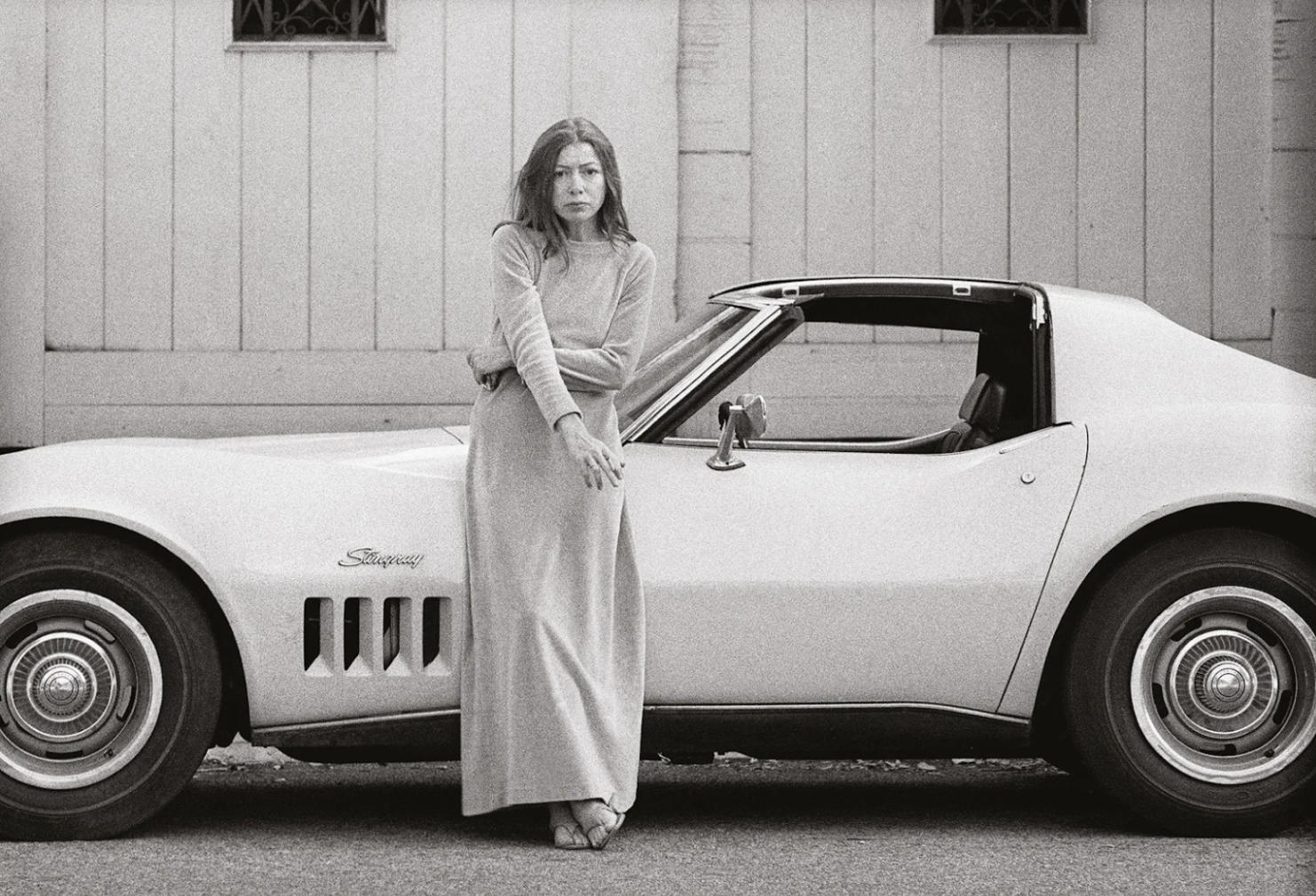Continue Reading
Biggest Finance Newsletter for Women
Join 200,000 other people interested in money, power, culture, and class.
Subscribe
A few weeks ago, I received an email from a listener who was grappling with the hollow trappings of prestige. She described graduating from an MBA program and starting a fancy management consulting job. She felt like she had really made it—for a little while.
“Even though information about how management consulting sucks is widely available, the reality came as a big shock,” she wrote. The work was “either mindless or impossible.” The hours? “Grueling.” And worse yet, the managers: “They were some of the least respectable people I’ve ever engaged with professionally.” This was an impressive firm that would make outsiders raise an approving eyebrow, but inside, she found stressed, striving, and unhealthy people.
She was haunted by what she saw as her inevitable future in this rarefied niche of global consulting: “The more I hear from executives, the more apparent it seems that the only way to truly succeed is to fully merge your being with your work.” She shuddered imagining a life in which she skipped lunch to earnestly recount her career trajectory at an intern roundtable; a consciousness that revolved around advancing the bottom line. She was writing to express her own ambivalence with this apparent contradiction: She can see through the delusion of institutional prestige, and yet, she still finds herself most impressed by ambitious women who bear its gleaming stamp of approval.
>
“The organizations most adept at brokering this deal between capital and labor are those that can convince you to accept most of your remuneration in a currency other than money, thereby maximizing their profit.”
Her words rattled around in my brain for days. Since the dawn of capitalism, the fantasy of the satisfied “company (wo)man” she describes has duped hopefuls into trading their only truly non-renewable resources (time, health) for something more abstract (comparatively little money, institutional validation). The organizations most adept at brokering this deal between capital and labor are those that can convince you to accept most of your remuneration in a currency other than money, thereby maximizing their profit. They are almost always esteemed, demanding, and ruthless. It can feel as though the only way to maneuver them is to renounce your individuality and become one with the for-profit organization.
This deception is not exclusive to white collar work, and it’s especially prevalent in industries that scan as “for women.” In fact, perhaps nowhere is it more obvious than in an entity that might appear the polar opposite of Deloitte or McKinsey: The Dallas Cowboys Cheerleaders organization. In a new Netflix documentary series called America’s Sweethearts, Charlotte Jones—daughter of Jerry Jones, the billionaire who owns the Cowboys—says the quiet part out loud in the very first episode when she notes, without a hint of irony, that the cheerleaders aren’t there “for the money.”
“[The cheerleaders] aren’t paid a lot, but the facts are they actually don’t come here for the money,” she explains. “They come here for something that’s actually bigger than that to them…They have the chance to feel like they’re valued, that they’re special, and that they’re making a difference. When the women come here, they find their passion and they find their purpose.” It feels important to note that Charlotte reportedly earns $1.5 million per year. Borrowing her logic, we can assume she’s not there for passion, purpose, or to be part of something bigger than herself, but to collect $125,000 per month before taxes.
Her comments are a veritable checklist of the excuses people make for lower wages in women-led professions: Women work not for wages, but for personal fulfillment. This creates the logical scaffolding necessary to justify low pay, rendering money an unimportant byproduct of their work. The NFL Players Association has collectively bargained for a minimum salary of $795,000. Meanwhile, the cheerleaders, who have an average salary of $22,500, brought a class action antitrust suit against the NFL in 2017 for conspiring to keep wages low across teams.
>
“Her comments are a veritable checklist of the excuses people make for lower wages in women-led professions: Women work not for wages, but for personal fulfillment.”
In short, take all of the expectations, bullshit, and impossibilities of modern womanhood and American capitalism, crank up the dial to its logical extreme, and you get the Dallas Cowboys Cheerleaders.
The 36 women who comprise the team are supernaturally talented and driven—they are constantly coiffed, energetic, positive. They care for one another, accessing seemingly bottomless reserves of optimism and appreciation. They are professional athletes who also happen to be orthodontists and accountants outside of the 30 hours they devote to their “part-time job” each week that nets the Cowboys organization many, many millions of dollars. For a sense of scale: A single poster of five cheerleaders earned the Cowboys $3 million in 1977; each woman featured was paid $150. (And that’s 10x more than their $15 game fee at the time!)
It’s a rich text for just about any social issue you’re interested in, except, unfortunately, for the organization’s practically explicit preference for white women. Outside of a scene or two, it devotes practically no time to the topic. (“Do it for the brown girls,” one woman of color tells another after being cut from training camp, an episode before she, too, is sent home.)
Since its inception, women have been doing almost all of the work and pocketing almost none of the profit. The official Cowboys website credits Tex Schramm, the team’s first general manager, with dreaming up the cheerleaders. But as Sarah Hepola’s reporting uncovered for Texas Monthly, the real founder of the squad (who had to beg for Tex’s approval) was a woman named Dee Brock. Tex asked her to coach them for free. The woman who designed the iconic uniform that now lives on display in the Smithsonian? She was paid nothing. This is because, of course, you are paid in adoration and social capital for your historic role, a tradeoff the players are not expected to make.
As a result of this deal, the cheerleaders themselves are tasked with embodying a set of oxymorons that produce a frustrating double-speak throughout the series. Their presence in the organization says that they are special, and that they could be replaced at a moment’s notice. It is both “just a fun, part-time thing,” according to representatives for the Cowboys, and yet, at every turn, the women are reminded what an invaluable privilege they enjoy as “elite global ambassadors” of this “world-class brand.” Depending on what an executive is trying to rationalize, being a Dallas Cowboys Cheerleader is either a breezy extracurricular or a blood oath not to be undertaken lightly.
>
“Depending on what an executive is trying to rationalize, being a Dallas Cowboys Cheerleader is either a breezy extracurricular or a blood oath not to be undertaken lightly.”
Jump cut to five-year veteran, Kelcey, eating dinner in a dark kitchen. She describes her schedule: She’s up by 6 for work, off at 4:30, then at practice until 10 PM, often eating dinner around 11 and falling asleep by 1. She gets up 5 hours later and does it all over again.
Shortly after we hear about Kelcey’s non-stop schedule designed to ensure the Cowboys’ bottom line is not threatened by paying a living wage, we join the two matriarchs of the DCC—Kelli and Judy—deliberating in a conference room about another cheerleader. “Don’t you think she just looked tired?” They tsk-tsked. “She just didn’t seem like she had the energy.” In this way, the system produces outcomes that those with proximity to power pretend not to understand: The workers are blamed for perceived underperformance, the managers feign confusion and exasperation.
This effect reaches a fever pitch in the final episode, when Victoria, one of the most tragic characters in the series, is told by her coaches that she’d “have to fight for her spot” as a fifth-year. “You just seemed fatigued toward the end of the season,” one coach tells her, following a 21-day streak of non-stop performing over the holidays. “Your kicks…” she says, trailing off, as though Victoria should understand. When Victoria leaves, Kelli hugs her: “You just need to relax! Just enjoy it.” I threw my remote at the television.
Nearly every single cheerleader who is released from training camp tearfully declares her intention to return and try again next year, citing a bewildering loyalty to this cold, multibillion-dollar corporation owned by a man with the morals of an alley cat.
Despite being harassed (one is sexually assaulted by a photographer on Thanksgiving day), stalked (“Someone put an AirTag on my car”), and underpaid ($20 per hour!), these women return to the Cowboys altar, ready to sacrifice themselves again. They rarely call it a job, instead routinely using the word “dream.” Of course, no other characterization could justify such an extreme level of devotion; this full merging of organization and self.
Management consulting, cheerleading—the allegiance only sounds completely irrational when the dream is not your own. But consider the way nearly all labor—especially that which codes as “feminine, ” both paid and unpaid—expects or explicitly requires ceding the territory of the self. Whether staying late at work to plan the party for no extra pay, or subjecting ourselves to expensive, rigorous aesthetic upkeep, or using the free time our jobs have not claimed to do the physical labor of managing a household and caring for those in it. Like I said: the most flawless allegory for American capitalism I’ve ever seen—and with dance sequences, no less!
>
“It’s a story about capital’s gaze—and the way we all exist under its exacting, contradiction-laden purview.”
Yes, the performance itself—the uniform, the dancing—is calibrated to the male gaze. Somehow, that’s the less interesting read. This is not a story about the male gaze; at least, not really. It’s a story about capital’s gaze—and the way we all exist under its exacting, contradiction-laden purview. Much like the cheerleaders, many of us mistake the system’s shortcomings as our own.
When things go sideways, the women assume it must’ve been their unpointed toes in the kick line, or torsos with the wrong number of inches between their belly buttons and belt buckles. This isn’t so different from the 22-year-old at the underpaid finance internship who finds he can’t hack the 80-hours-per-week commitment, and views his underperformance as a personal failing. We assume the system must be working as intended—that we are the problem in need of fixing.
But perhaps the greatest contradiction they personify is the way in which these women find genuine purpose, meaning, and belonging in the midst of this toxicity and exploitation. This is not because of the organization—the flawed structure they exist within—but in spite of it. Imagine what that spirit—all the resilience, enthusiasm, and talent—would create writ large if we could all stop using it to make men like Jerry Jones richer.
July 8, 2024
Looking for something?
Search all how-to, essays, and podcast episodes.
Explore
While I love diving into investing- and tax law-related data, I am not a financial professional. This is not financial advice, investing advice, or tax advice. The information on this website is for informational and recreational purposes only. Investment products discussed (ETFs, index funds, etc.) are for illustrative purposes only. It is not a recommendation to buy, sell, or otherwise transact in any of the products mentioned. Do your own due diligence. Past performance does not guarantee future returns.
Money with Katie, LLC.
Terms & Conditions | Privacy Policy
This Site Was Built by Brand Good Time



